My Cultural Diet for June 2023: Dark City, Teenage Mutant Ninja Turtles, The Cure, Blade Runner, Spider-Verse
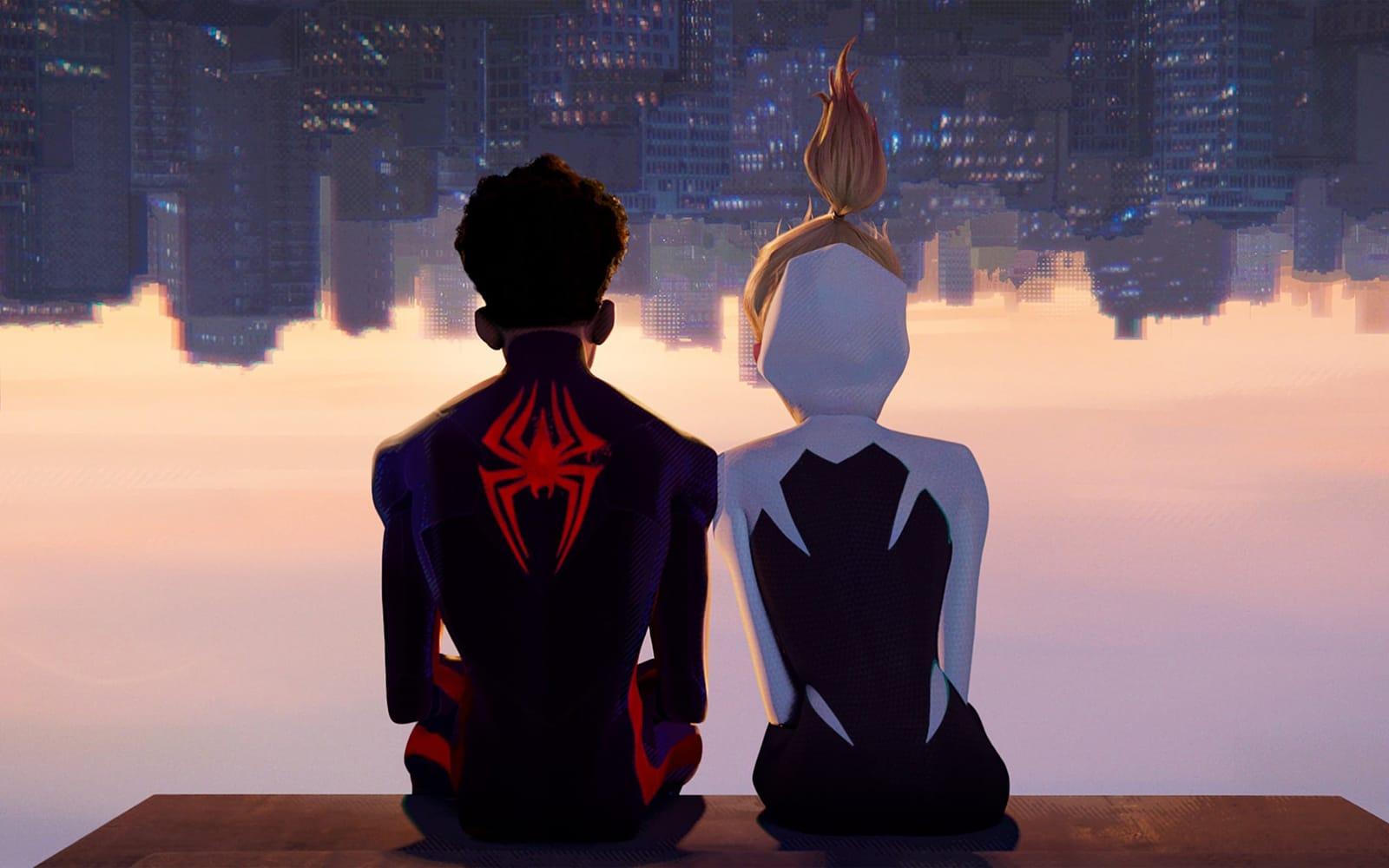
In order to better track my various cultural experiences (e.g., movies, TV shows, books, restaurants), I’ve created the Cultural Diet. Think of it as my own personal Goodreads, Letterboxd, and Yelp, all rolled into one (more info here). Every month, I recap everything that I watched, read, etc., in the previous month.
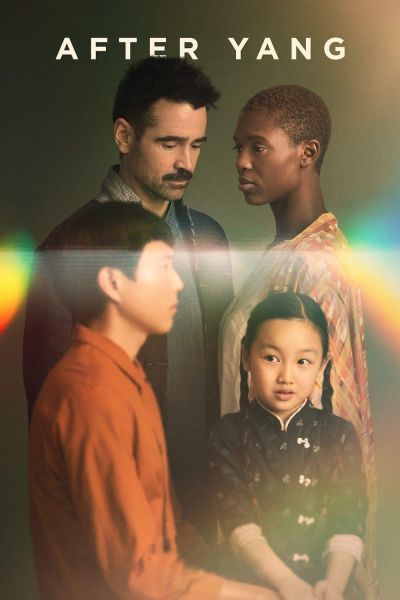
Given its premise — an interracial couple tries to repair the malfunctioning robotic child that they bought to help their adopted daughter connect with her Chinese heritage — After Yang could have easily been a maudlin, overly-dramatic “issues” film. It does touch on big issues: the challenges of transracial adoption, the fleeting nature of memory, the responsibility humans have to their technology. (Believe it or not, that last one brought to mind Ghost in the Shell.) But “subdued” and “muted” are the operative words for After Yang; there are no big cathartic “Hollywood” moments when a character (and by extension, the audience) has a big moral epiphany. At times, the film is almost too subdued, from the performances and sparse dialog to the languid pacing. (It is, however, uniformly gorgeous to watch, thanks to Benjamin Loeb’s cinematography and some luminous visual effects.) But that allows After Yang to develop a deeper emotional resonance that took me by surprise at times, and forces the viewer to really consider what happened. Back in the day, I used to run a film discussion group at my church; After Yang would be a perfect film for such a group to watch, discuss, and reflect upon.
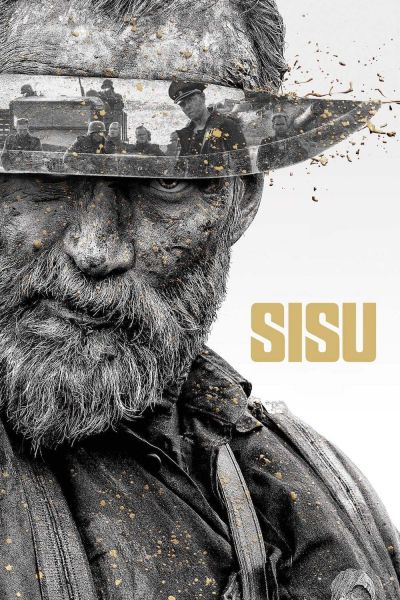
You’d think watching Nazis get dispatched in gory, ignominious ways would be its own cinematic reward. But Sisu is very much a case of diminishing returns. It starts out strong, with our grizzled protagonist mining for gold in the wilds of Lapland amidst the chaos of World War II’s final days. The cinematography in these early scenes is striking, with a dark beauty that adds to the movie’s apocalyptic tone. Soon enough, however, Nazis are getting stabbed, shot, blown up by landmines, and crushed by tanks because — surprise! — our boy’s an infamous ex-commando. But that’s when it gets… dare I say… boring. Sisu clearly wants to be fun in a B-movie sort of way as Nazis get picked off one by one in increasingly bloody ways. But it could’ve been a more interesting movie had it stayed gritty and grounded (literally). By the time its final act begins, though, Sisu has devolved into the kind of soulless, CGI-enhanced antics typically associated with the MCU.
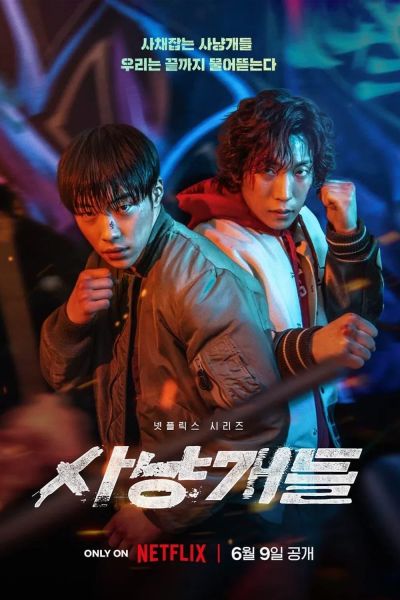
Sometimes, you just want to see bad guys get their butts kicked. That was the main appeal of Amazon’s Reacher, and I experienced a similar impulse watching this Korean drama on Netflix. Set during the height of the pandemic, Bloodhounds follows a pair of amateur boxers named Gun-woo and Woo-jin who must punch their way through Seoul’s underbelly after a notorious loan shark threatens Gun-woo’s mom and destroys her business. The series’ action sequences are crisp and well-choreographed, and all the more satisfying in light of the bad guys’ overall sliminess. But given that Bloodhounds is a Korean drama, there’s a lot of, well, drama. Which means some really odd tonal shifts. One minute, the duo’s grimly fighting for their lives against an army of bat-wielding thugs, and the next, the series tosses out some quasi-absurdist humor (often due to the boxers’ differing personalities) or dives headlong into super-earnest bromance or teary-eyed family drama. It doesn’t help that Bloodhounds’ female lead, Kim Sae-ron, was dropped from the series after being charged with drunk driving, which abruptly ended one of the series’ primary character dynamics. While it’s a lot of fun watching Gun-woo and Woo-jin punch thugs, gangsters, and greedy millionaires in the face over and over again, I wish Bloodhounds would’ve made up its mind: be a gritty crime thriller or a light-hearted buddy dramedy, but not both.
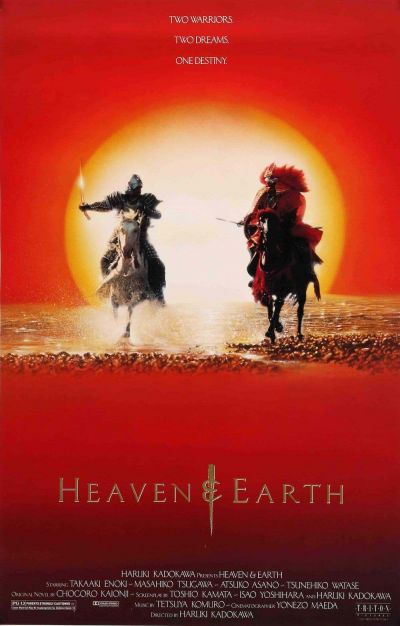
I watched this on VHS almost 25 years ago, and something about it stuck with me over the years. So I was disappointed when it didn’t quite live up to my memories. Visually, Haruki Kadokawa’s Heaven and Earth is often stunning and even feels like the platonic ideal of a samurai movie, be it the quieter scenes when characters are framed against falling cherry blossoms or wandering through a snowy forest, or during massive battle scenes employing thousands of extras and hundreds of horses. (The film was released in 1990, so no CGI here. The battles were filmed in Canada, though, so it’s a little weird knowing those are the Rockies looming behind all those samurai.) Story-wise, however, this retelling of the historic conflict between two Japanese warlords (Nagao Kagetora and Takeda Shingen) falls flat. There’s potential for interesting arcs — Kagetora renounces all earthly pleasures, including love, to achieve his goals, only to later abandon his throne in fear of what the war is doing to him, spiritually — but the movie never really develops them. As a result, it’s hard to get too emotionally involved in the movie’s storyline; it’s very remote and detached. That, combined with the running narration and captions, makes Heaven and Earth feel more like a made-for-TV documentary than an epic samurai film à la Akira Kurosawa or Masaki Kobayashi.
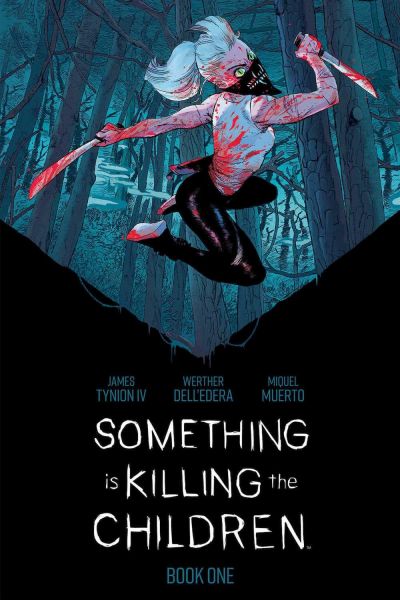
Describing Something Is Killing the Children as a series about a highly trained young woman with special abilities who hunts down monsters will undoubtedly bring to mind Buffy the Vampire Slayer comparisons. But whereas much of Buffy’s charm lay in its willingness to embrace camp and humor, there is no such willingness here. Something Is Killing the Children is unremittingly bleak and extremely gory as the aptly (and awesomely) named Erica Slaughter travels to the small town of Archer’s Peak to confront the monster feeding on the town’s children — only to encounter paranoia, bigotry, and her own personal demons. The first three volumes contain the Archer’s Peak arc, volume four delves into Erica’s childhood and training, and volume five begins a new arc where Erica faces a powerful new monster as well as the wrath of her former allies. Between this, The Department of Truth, Justice League Dark, and his work on Batman, Tynion has become one of my favorite writers. Netflix purchased the adaptation rights to Something In Killing the Children in 2021, with Mike Flanagan first attached and then Dark’s Baran bo Odar and Jantje Friese; it’ll be interesting to see how they handle the series’ extremely graphic nature, especially where the monsters’ young victims are concerned.
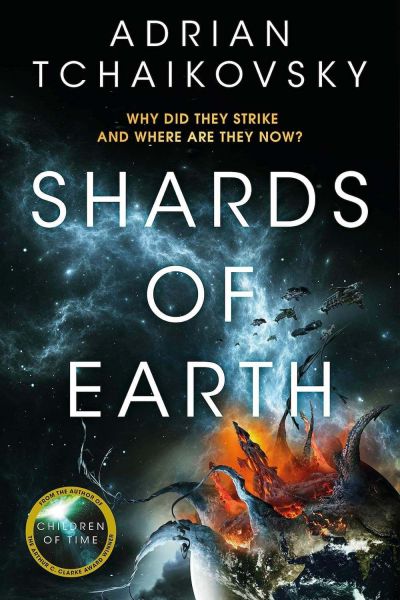
Ever since finishing the Expanse series last year, I’ve been looking for something to fill up that space opera-sized hole in my life — and Shards of Earth did just that. I’ve seen Tchaikovsky’s novels at the library for awhile now, but finally decided to check this one out after seeing that his Final Architecture series had concluded earlier this year. (I didn’t want to start an unfinished series.) Shards of Earth has everything I wanted: a richly detailed universe filled with multiple alien races and offshoots of humanity; a motley crew of ne’er-do-wells eking out an existence on the edge of civilization; and a mysterious planet-destroying threat that, of course, only our motley crew seems capable of defeating. That is, if they can survive cults, corrupt politicians, alien gangsters, and their own prejudices. I particularly enjoyed Tchaikovsky’s vivid prose describing the bizarre realities of space travel, the otherworldly entities potentially lurking in the depths of space, and the effects they have on mortal minds — all of which make his universe more compelling and intriguing, and reminded me of my favorite aspects of David Zindell’s storytelling.
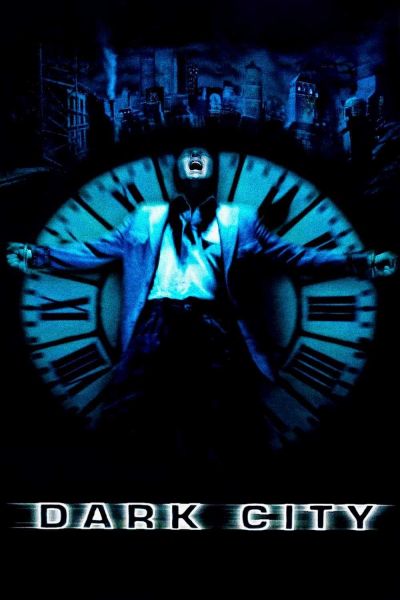
More than 20 years have passed since my last viewing of Dark City, but I was obsessed with it when it came out in theaters back in 1998 and it was one of the first DVDs that I ever bought — after The Matrix, of course. (Fun bit of trivia: The Matrix, which came out in 1999, actually reused some of Dark City’s sets.) Dark City is all about atmosphere in a way that I wish more genre movies were. (See also: Blade Runner.) Director Alex Proyas dials up the atmosphere to ridiculous levels, from the persistently nocturnal setting to the vintage 1950s aesthetic to the ominous, expressionistic production design — and I love it. (I’m currently reading a collection of Mister X comics, and I have to think that it was an influence alongside Terry Gilliam, Fritz Lang, and Katsuhiro Otomo.) This was my first time watching Proyas’ director’s cut, which thankfully removed the spoiler-ridden opening narration and includes some new scenes that further elaborate on our protagonist’s strange new abilities. Proyas is apparently in the process of developing a Dark City series, which I’m unsure about. This movie existing as a strange, singular gem from the late ’90s is part of what makes it so special. To delve more deeply into its fantastical world might break the spell.
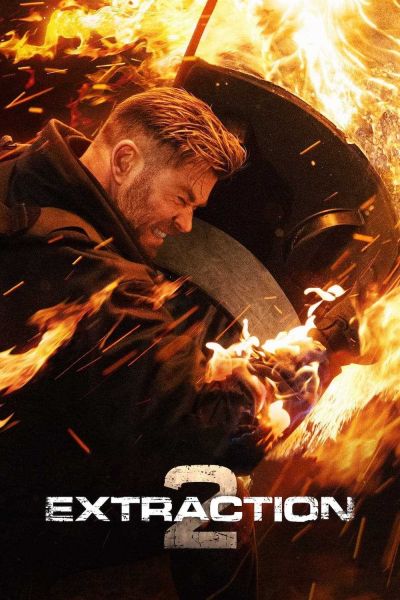
Most people probably know Chris Hemsworth as cinema’s most beloved “himbo” courtesy of the Thor movies, but I much prefer his Tyler Rake, the seemingly un-killable mercenary who can rescue anyone from even the worst situations. (In this case, it’s a gangster’s family from a brutal prison in the country of Georgia.) There’s a sorrow behind his deadly actions, and Extraction 2 is best when it presses into that; it gives the film a certain haunted quality in the midst of the mayhem. Of course, you don’t watch this sort of movie for a deep character study; you watch it for the mayhem, to see how much punishment Rake can dish out and take in return. One scene, where he rips a guy’s hand apart, had me cringing in a way I don’t often experience. Then later, I practically cheered at the ridiculous awesomeness when he started punching guys with his fist on fire. Like the first Extraction movie, the sequel’s got an epic single-take sequence that stretches for over 20 minutes and ends with our hero shooting down helicopters from a moving train. Like all single takes, it does get a little tedious and artificial, but you have to admire the chutzpah and chops it takes to pull it off. One quibble about the film’s execution: As with Netflix’s FUBAR, the CGI explosions look surprisingly chintzy at times. Hopefully, they’ll get that sorted out for the recently announced Extraction 3, which is set up by a quasi-cliffhanger involving an enigmatic Idris Elba.
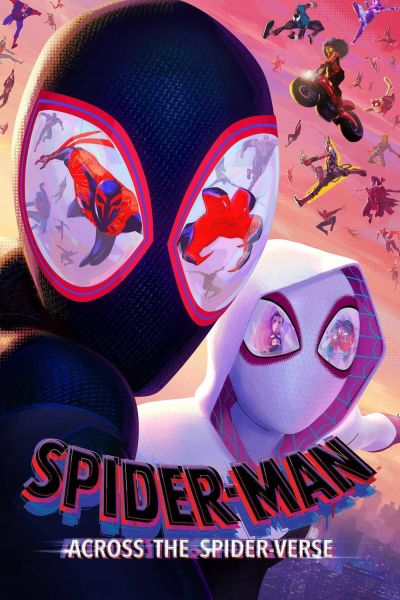
This was actually my second viewing; my first was plagued by poor sound issues that made it difficult to engage with the film. Everyone lauds the Spider-Verse movies for their visuals, and rightfully so, but these movies are also a feast for the ears, and not being able to fully enjoy that aspect was a real killjoy. I think the sound issues were fixed this time around; I could finally hear Gwen Stacy’s opening monologue, anyway. Across the Spider-Verse is her film as much as it is Miles Morales’ film, exploring her own tragic arc as a Spider-Person. Visually, this film pushes way beyond its predecessor (e.g., the gorgeous abstraction of Gwen’s scenes with her father, Hobie Brown’s anarchic style, the beautiful fluttering of the plastic sheets over the Alchemax ruins, Miles and Gwen’s upside-down heart-to-heart high above New York), and it’s a testament to the animators that everything remains so fluid and coherent. Across the Spider-Verse doesn’t pack quite the same emotional heft as Into the Spider-Verse (how could it?), though I definitely teared up during Rio Morales’ speech to Miles. Nevertheless, it’s a wonderful middle film and I’m beyond anxious to see Beyond the Spider-Verse next March. (Sidenote: The most enjoyable thing about this particular viewing was hearing all of the protests at the cliffhanger ending from audience members who obviously didn’t know that a third film’s coming. My own kids were pretty gobsmacked, as was the lady sitting behind us. It was glorious.)
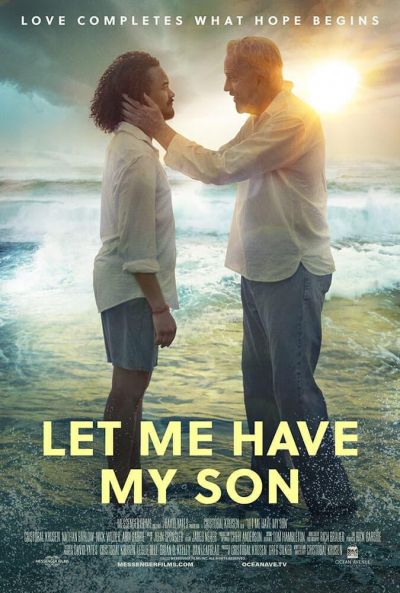
I confess: I expected Let Me Have My Son to be in the same vein as some inspirational “Lifetime Original” movie. There are moments when the film — which was inspired by writer/director Cristóbal Krusen’s experiences with his son’s schizophrenia — does venture into that territory, replete with swelling music, light-suffused cinematography, and Krusen (who also stars) even reading Scripture directly to the audience. But when Krusen’s character begins to navigate the Kafka-esque hospital halls and bureaucracy to retrieve his son, the film develops a nightmarish weirdness that feels more akin to David Lynch. The key to understanding and appreciating the film at its most bizarre, I think, lies in Krusen’s opening narration: “A good bit of what you’re about to see is true as it happened. More is true, though, as to how it felt.” I’ve never experienced an immediate family member struggling with mental illness, but I can only imagine the stress, fear, and anxiety that it would hold for someone who does — and I think that subjective experience is what Krusen is ultimately trying to convey. Let Me Have My Son is by no means subtle, but it is earnest and honest, and its willingness to get weird combined with the obviously personal storyline keeps it from sinking into treacle.
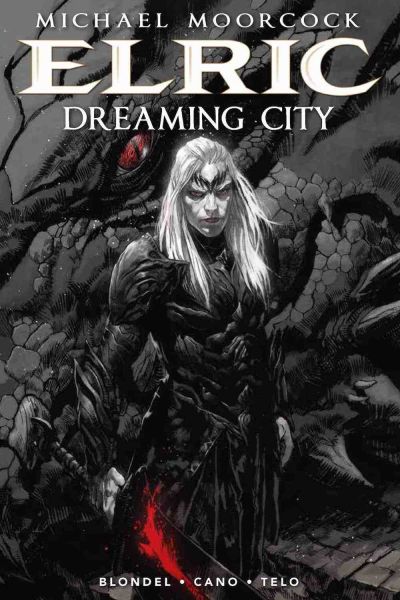
I’ve liked Michael Moorcock’s Elric novels for years. They’re grim and deeply cynical — Moorcock wrote them, in part, as a rejection of Tolkien’s high fantasy — as well as deeply imaginative and fantastical. But this is the first Elric comic I’ve read. Let’s start with the positive: Julien Telo’s artwork possesses a moody edge that’s quite apropos for the doomed albino, and some of his designs (e.g., the Melnibonéan dragons) are really cool. The storyline, however, is a mixed bag. The Dreaming City adapts the first published Elric story, in which he leads an attack on his former home of Imrryr, while awkwardly incorporating elements from The Sailor on the Seas of Fate, specifically Elric’s journey to the ancient city of R’lin K’Ren A’a. The Dreaming City also downplays the Elric saga’s inherently tragic nature in order to highlight its decadence. Nowhere is this better seen than the decision to turn Elric’s lover Cymoril into a vengeful harpy clad in topless armor (which even the storytellers admit is clichéd) or changing the nature of her death. That said, highlighting the sentience of Elric’s cursed runeblade Stormbringer with a feminine aspect is an interesting decision that more explicitly states what Moorcock intimates in his writings.
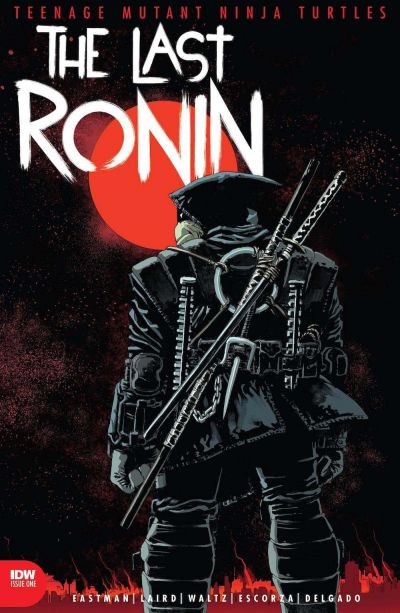
This is a surprisingly difficult review to write. Like anyone who grew up in the ’80s and ’90s, I was aware of the Teenage Mutant Ninja Turtles, but not through Kevin Eastman and Peter Laird’s comic book; my only real exposure was the Fred Wolf cartoon series and the arcade game. (Unlike so many of my classmates, I never did see the movies.) Thus, I started reading The Last Ronin with a weird mix of nostalgic familiarity and total ignorance. The Last Ronin, however, is clearly geared towards long-time fans; it’s filled with references and callouts to previous characters and adventures, and finds the last surviving Turtle seeking to avenge his brothers and sensei after Shredder’s grandson betrays them all. There’s an appropriately elegiac tone to the story and the new Shredder character has some interesting mommy issues. Overall though, I was left feeling a bit underwhelmed. I suspect I would’ve felt differently had I been a longtime fan, though.

The widowed Mrs. Whitaker lives a perfectly ordinary life: tending her garden, having lunch with friends, going to church, collecting her pension. That all changes when she buys the Holy Grail at a local second-hand shop and a gallant knight named Galaad arrives at her door to collect it. Neil Gaiman’s Chivalry — originally published as a short story back in 1992 — is a seemingly slight tale, but like much of his storytelling, there’s more going on below the surface. It’s an obvious and good-natured riff on Arthurian legend, but it’s also a rumination on aging, death, love, grief… you know, the casual topics. It’s also filled with delightfully understated details that spark the imagination. How to explain Mrs. Whitaker’s announcement of the Grail to her friend? What is the significance of Galaad’s geas? Why is Mrs. Whitaker so talented at recognizing magical and arcane objects? Colleen Doran’s watercolors are light and dreamy, which is quite apropos for this playful-yet-bittersweet tale. (Her afterword sheds some light on both her inspiration and process for Chivalry, as well as her own love for Arthurian legend, including Howard Pyle’s classic work.)
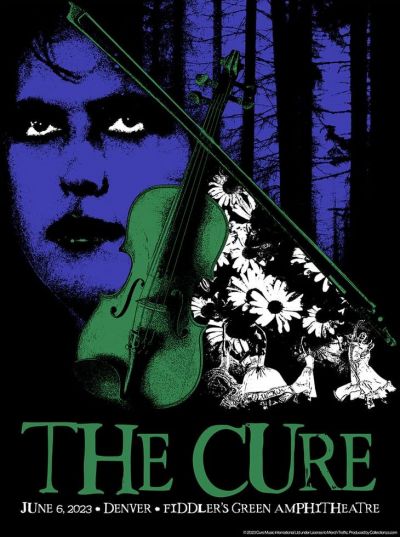
The Cure were absolutely phenomenal. They played a pretty eclectic set with the usual hits (“A Forest,” “Lovesong,” “Pictures of You,” “Just Like Heaven”) as well as some deep cuts (“At Night,” “If Only Tonight We Could Sleep,” “Kyoto Song,” “Prayers for Rain”) and even a song from Wild Mood Swings (“Want”). They played 5 – 6 new songs, too, all of which were great and have me really excited for the new album (whenever Robert decides to release it). My favorite song of the evening, however, was “A Night Like This.” (I wish I would’ve recorded some video of it but I was too busy dancing and singing along.) We missed the first 2 – 3 songs from opening act The Twilight Sad because the venue took forever to get people in, but what we did see was phenomenal. I love their wall of sound mixed with a thicker-than-thick Scottish brogue, especially when they played my favorite song of theirs (“VTr”). All in all, a pretty perfect evening. I was afraid we’d get rained on because of the recent weather, but aside from a few sprinkles, the weather was great. Also, the crowd was a fun mix of goths (old and young), punks, Renaissance fair attendees, rivetheads, families, and middle-class suburbanites like ourselves. And we all sang along, at the top of our lungs, to “Friday I’m in Love.” I feel so fortunate and grateful to have been there.
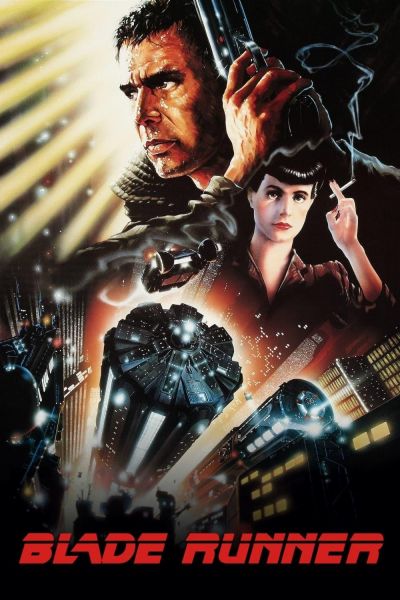
Shortly after finishing Arrival, I started talking about Denis Villeneuve’s films with my oldest, who’s a huge fan of Dune. I mentioned that Villeneuve also directed Blade Runner 2049, the sequel to one of my favorite films of all time: Blade Runner. And so the night ended up being a sci-fi double feature as we pulled up Ridley Scott’s sci-fi masterpiece. Specifically, we watched 2007’s “Final Cut,” i.e., the definitive director’s edition. I have some minor quibbles with some of Scott’s choices for his director’s cut, but I have no such issues with the film’s visuals. Already iconic, the “Final Cut”’s digital remastering makes the film’s visuals all the more stunning. Modern visual effects, which rely so heavily on CGI, can never hope to contain the richness and depth that’s on display in every single one of Blade Runner’s scenes. Despite being released over forty years ago, Scott’s film looks more futuristic than any modern film, and I suspect that’ll be the case for more decades to come. We always talk about suspending disbelief when watching movies, especially genre titles, but that term — “suspension of disbelief” — doesn’t feel quite right when talking about Blade Runner. Thanks to its production design, practical effects, and haunting soundtrack (courtesy of Vangelis), I can’t help believing that Blade Runner’s noir-ish, rain-soaked world actually exists.
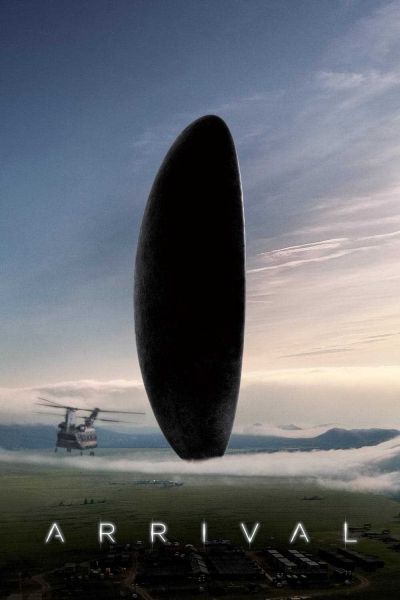
When is an alien invasion movie not an alien invasion movie? When that movie is Arrival. Sure it features aliens arriving on Earth, their plans and schemes a mystery. Are they a threat? What are their plans for humanity? But the movie is primarily about attempts to communicate with the aliens and understand their bizarre language, attempts that lead to some surprising results. I watched the first 15 minutes or so the other night, and was instantly entranced. Denis Villeneuve’s directing is masterful and assured, elements necessary for a movie that’s essentially about translating a (very) foreign language. The scene where our main characters first see the massive alien vessel in person, as they fly over a massive crowd, then an abandoned road, and then the fog-enshrouded plain where the vessel stands — all the while accompanied by Jóhann Jóhannsson’s (RIP) otherworldly score — is one of my favorites. I watched this with my kids, and it was fun asking my 15-year-old what he thought of the film’s overarching themes concerning death, existence, and free will. These are heady topics, but Arrival handles them with grace and poignancy.
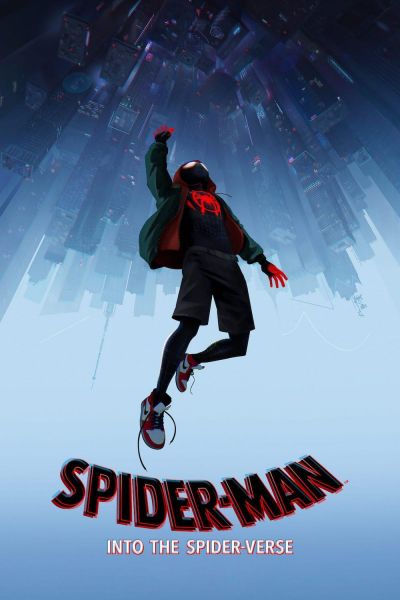
We watched this in preparation for Across the Spider-Verse. Into the Spider-Verse is perfect, and its perfection becomes clearer with each subsequent viewing. There is, of course, the stunningly vibrant artwork and animation, which pushes the medium forward by drawing inspiration from the classic styles of the past. (I love the climactic battle, in part, because it has Kirby Dots for days.) But that visual panache is also matched by the most heartfelt storytelling. As a father, the “spark” speech that Miles’ dad gives never fails to move because it’s precisely the sort of thing I always want my kids to hear from me. Miles’ “Uncle Ben” moment is appropriately heartbreaking; Stan Lee’s cameo is delightful as is the mentee/mentor dynamic between Miles and Peter B. Parker (voiced perfectly by New Girl’s Jake Johnson); I stan Spider-Man Noir; the moment when Miles finally comes into his own as Spider-Man is one of cinema’s most satisfying and triumphant scenes; the hip-hop soundtrack totally slaps… I could go on but you get the idea. Like I said, perfect.